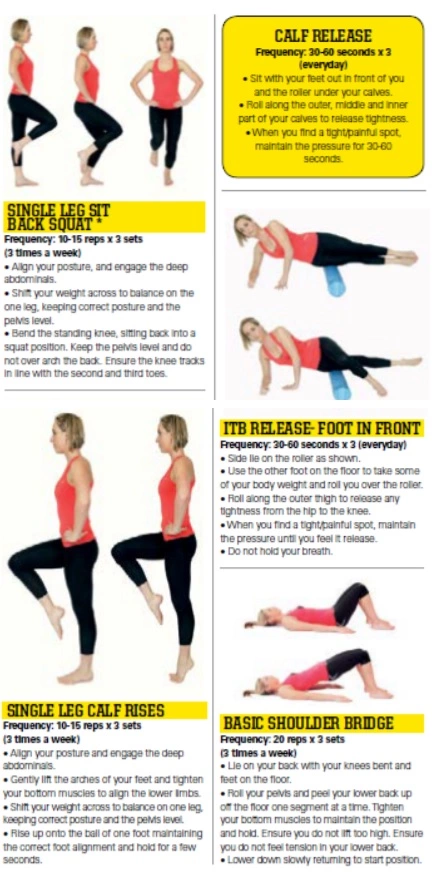Tendon pain is very common in the triathlon world, by Luke Kellaway TriathlonPlus Mar Apr 2017
The triathlon world is no stranger to tendon pain. There is a plethora of ‘useful’ articles on the treatment of tendon injuries. If you were to ask around your club, I’m sure you’ll hear differing advice on how to remedy tendon pain. The truth is, our understanding of tendon pathology and rehabilitation is still evolving. However, the most consistent theme amongst the literature and tendon guru’s is load management.
A tendon is the non-contractile tissue that connects muscle to bone. They are formed from tightly packed collagen fibers that store and transmit energy to its skeletal attachment. Tendons have the ability to stretch (think elastic band) and store kinetic energy. When the tendon recoils, the energy can be released and maximize the force that the musculo-tendinous unit creates.
Tendons need to be maintained with sensible levels of loading. A tendinopathy occurs when a tendon is loaded too much or not enough. Prolonged exposure to one of these extremes will lead to a break down or disorganization of the collagen fibers and pain. This typically happens in a heavy training block, leading up to triathlon season. The way to protect yourself from tendinopathy lies in prehabilitation and carefully planning your training blocks.
We know that tendon tissue can be broken down with loading. However, after the initial catabolic response to loading a tendon goes through an anabolic response and the tissue is repaired. This process takes approximately 36-48 hours. Therefore, heavy loading should not be performed on consecutive days. For example, do not place your sprint sessions on consecutive days or heavy heel raises one day followed by sprints the next day.
Throughout your seasons try not to have spikes of consecutive days of loading. Do not start your season with 3 long runs over 3 days, if you haven’t run for 2 months. Mostly, this is common sense but we see numerous patients every year demonstrating poor marathon and triathlon preparation.
The most common tendinopathies appear in the Achilles and patella tendon. In the Achilles you can either have insertional (where the tendon meets the heel) or mid portion tendinopathy (in the middle of the tendon). Insertional tendinopathies are characterized by a tender swelling of the heel bone. Mid-portion tendinopthies appear as a painful lump within the tendon. Patella tendinopathies rarely have palpable characteristics but the pain is felt between the knee cap and shin bone. Most tendinopathies follow a gradual onset history and present with initial morning pain. Often the pain associated with tendinopathy can improve throughout a run, however I would strongly advise against running through tendon pain.
If you are suffering with a tendinopathy at present, the best thing is to see a physiotherapist who is well versed in the current tendinopathy literature. They will prescribe the right type of loading exercises for the specific tendon you’re having issues with. Exercises for the Achilles tendon normally involve variations of the heel raise. Patella tendinopathy exercise programs normally make use of squat variations.
Treatment of a tendinopathy normally takes between 6-12 weeks. In this time your physiotherapist should also be able to address any other contributing factors including poor hip and knee stability, footwear, running style, cadence etc.
Try my top 5 exercises for preventing Achilles and patella tendinopathy.

